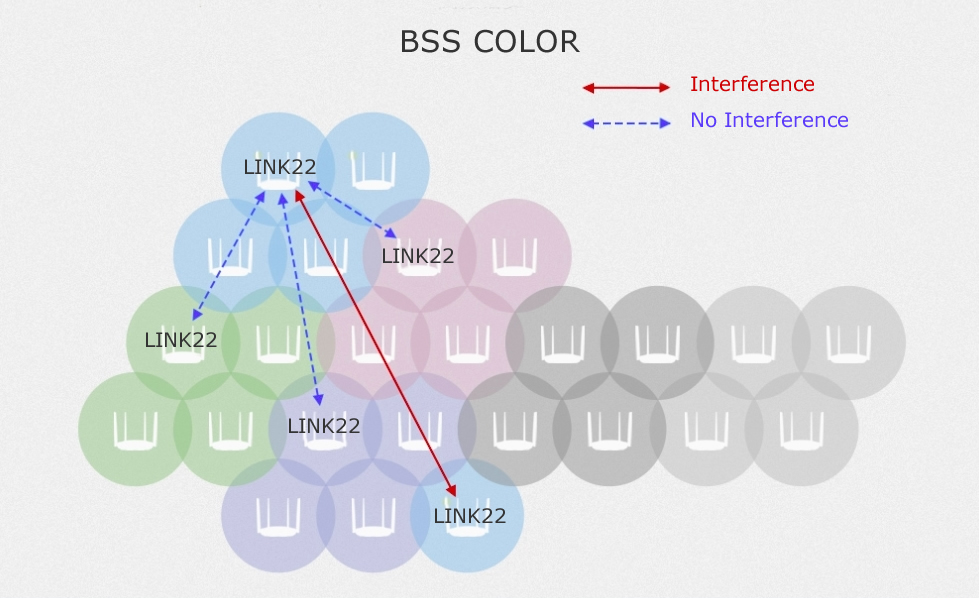Wi-Fi 6
- 2
What's up in Wi-Fi 6?
Speed goes up every time the WiFi standard evolves into the next upper tier of hierarchy.
But does speed mean speed? Think about a German autobahn with unlimited speed limit during the rush hours that a car must follow the one in front of it and ends up in a long queue of traffic.

Speed is really conditional, isn't it? That's where Wi-Fi 6 comes in to create more lanes 1024QAM vs 256QAM of its predecessor Wi-Fi 5 to get around the stuck traffic.
Think also about a customer queue awaiting to be served by a bank teller. Bad day if long transactions holds up ahead of you.
What if 8 customer could submit their requests at the same time and just wait for the bank teller to serve them one at a time? That's what Wi-Fi 5 does. Cool itn't it?
But what if the teller could push a bit further by chopping all of the 8 transaction requests into smaller tasks (known as RU or resource units) and being able to respond to each one of them simultaneously? That's how Wi-Fi 6's OFDMA and MU-MIMO make it possible. Each customer experiences faster response and thus earns much lower latency.
Key takeaway that marketing won't tell you
All of these sounds great, doesn't it? But who needs wide lanes and sophicated OFDMA MU-MIMO scheduling if there is only one person getting online in the house?!
So you may wonder if it's worth spending on a new Wi-Fi 6 router for a family of 4, unless of course it's affordable and fun to have a mesh network in the house.
There are at least two key takeaway on Wi-Fi 6. Speed has gone up to 1201Mbps per stream making it possible to have a theoretical throughput of 10Gbps. But in practice 5GHz suffers significant speed attenuation as the further you move away from the router, and so Wi-Fi 6 brings back the good old 2.4GHz which has an excellent speed-to-distance ratio to expand the cell (router to router) radius in a mesh network.
Wi-Fi 6 has spoken. 2.4GHz IoT devices and long range antenna are as important as the upcoming 6GHz or Wi-Fi 6E as the future technology evolves.
Wi-Fi hierarchy
Wi-Fi 6 = 802.11ax 2.4GHz + 5GHz @ 574Mbps + 1201Mbps /stream
Wi-Fi 5 = 802.11ac 5GHz @ 866Mbps/stream
Wi-Fi 4 = 802.11n 2.4GHz/5GHz @ 65~600Mbps/stream
Wi-Fi 3 = 802.11g 2.4GHz @ 54Mbps/stream
Wi-Fi 2 = 802.11b 2.4GHz @ 11Mpbs/stream
Wi-Fi 1 = 802.11 2.4GHz @ 1~2Mbps/stream
Who needs Wi-Fi 6?
WAN Speed is plateaued at Wi-Fi 4, since a majority of ISP ADSL modems of 17Mbps are still in service, as does the ISP broadband modem of 500Mbps. What really matter in Wi-Fi 6 is when you have your own NAS, personal cloud and home entertainment server. The umtimate speed benefit of a Wi-Fi 6 router at home is obvious.
Conversely, a 2.4GHz long range antenna does what a Wi-Fi router doesn't when distance is what it matters against the quest for ultimate speed.
What speed is needed for 4K streaming?
You need a minimum download speed of 3 Megabits per second to watch a single video stream in clear, standard definition. The best Internet speed for HD streaming is 5Mbps, and if you go all the way up to 4K streaming, or ultra HD, your bandwidth should start at 25Mbps.
- 2